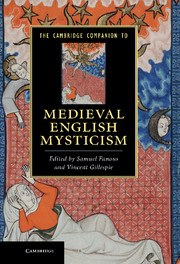Book contents
- Frontmatter
- Contents
- List of contributors
- Preface
- Chronology
- List of abbreviations
- 1 Introduction
- 2 c. 1080–1215: culture and history
- 3 c. 1080–1215: texts
- 4 1215–1349: culture and history
- 5 1215–1349: texts
- 6 1349–1412: culture and history
- 7 1349–1412: texts
- 8 1412–1534: culture and history
- 9 1412–1534: texts
- 10 1534–1550s: culture and history
- 11 1534–1550s: texts
- Guide to further reading
- Glossary of theological terms
- Index
- References
10 - 1534–1550s: culture and history
Published online by Cambridge University Press: 28 July 2011
- Frontmatter
- Contents
- List of contributors
- Preface
- Chronology
- List of abbreviations
- 1 Introduction
- 2 c. 1080–1215: culture and history
- 3 c. 1080–1215: texts
- 4 1215–1349: culture and history
- 5 1215–1349: texts
- 6 1349–1412: culture and history
- 7 1349–1412: texts
- 8 1412–1534: culture and history
- 9 1412–1534: texts
- 10 1534–1550s: culture and history
- 11 1534–1550s: texts
- Guide to further reading
- Glossary of theological terms
- Index
- References
Summary
In 1534, one year after he had received a commission from King Henry VIII ‘to peruse and dylygentlye to searche all the lybraryes of Monasteryes and collegies of thys your noble realme’, the Tudor antiquary John Leland saw a manuscript containing Richard Rolle's works at York Minster, and he recorded the titles: ‘[1] Hampole super Psalterium; [2] Idem super lectiones mortuorum; [3] Idem super Trenos; [4] Idem super aliquot loca Canticorum; [5] Idem super orationem dominicam et symbolum; [6] Idem de emendatione peccatoris; [7] Idem de amore; [8] Idem super Iudica me Deus; [9] Idem super Apocalypsim.’ It was not as a hermit and contemplative that Leland found Rolle worthy of note, however, but as an Englishman, one of those many predecessors whose writings he intended to bring ‘out of deadly darkenesse to lyvelye lyghte’, so ‘that thys your [Henry's] realme shall so wele be knowne, ones paynted with hys natyue colours, that the renoume therof shal geue place to the glory of no other regyon’ (The laboryouse Iourney, sig. B.viiir, E.iiiir). This represents a fundamental shift from the concerns of Rolle's original readership, one that would become even more pronounced in Elizabeth's reign: by the end of the sixteenth century the writings of the English mystics would be considered in most circles (apart from the recusants) antiquarian curiosities at best rather than living witnesses to religious experience.
- Type
- Chapter
- Information
- The Cambridge Companion to Medieval English Mysticism , pp. 225 - 248Publisher: Cambridge University PressPrint publication year: 2011
References
- 1
- Cited by

